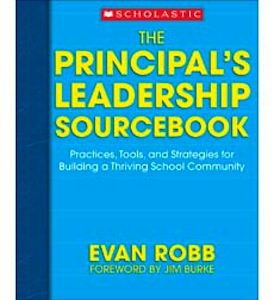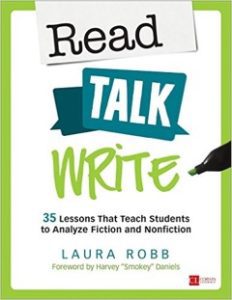Flip The Traditional Teacher Read Aloud
By Lester Laminack
Enjoy, as Lester guides you from teacher-centered to student-centered teacher read alouds!
When you reach the end of an article, a story, or a book do you reach for your notebook to answer a set of questions written by someone else? Do you feel that your understanding of what you have read, your worth as a reader, hinges on being able to give the answers to someone else’s questions? Probably not. Yet it seems that much of our reading instruction relies heavily on having our students answer a set of questions after they complete a reading assignment. Following reading with a set of questions is a longstanding practice in literacy education. In fact, many commercial reading programs follow this pattern. One well-known program assigns a point value to each title, then has the children read and log on to a computer to read and answer a set of 10 multiple choice questions. Other programs have students read then write answers to similar questions. And if we are teaching from a literature-based approach that doesn’t rely upon a commercially produced program we tend to have our own questions to hold our students accountable.
Questions Can Create Patterns
As teachers, most of us were introduced to Bloom’s Taxonomy as undergraduates in a teacher education program. We likely practiced developing questions for each of the levels in the taxonomy and began our teacher careers believing that it was our charge to develop good questions that would hold our students accountable and yield proof that they read and understood the assigned text.
We sat with our notepads at hand and read the books, articles, poems, and various other texts our students would read across the year. We paused at various points in the text to draft the questions we would give our students. We were attentive to character traits, shifts in the plot, nuances in word choice, the author’s use of simile and metaphor and figurative language. We noted allusions to cultural references and other literature. We were alert to the role of setting in the text, the way the author used dialog, bias, and narration. We read closely and synthesized as we developed the questions we would present to the students. Questions, whether presented by the program or developed by the teacher, may fall into a pattern or categories. For example, questions about the main character, physical descriptions, main idea, vocabulary, opinion, evaluation, analysis, synthesis, inference, etc.
As students read and respond to the questions presented they begin to recognize the patterns as well. Does this impact the way they read? Does it shape what they tend to notice and pay attention to? In other words, are they reading with the pattern of your questions in mind? If the answer is, yes, then what are they failing to notice? What is the cost to comprehension and attention and engagement?
Get In Touch With Ways You Read
Consider your own thought process as you read a text with the intention of writing questions for students to answer. Are you beginning with a frame in mind? That is, do you begin with thoughts focused on Who? What? When? Where? Why? and How? Or do you begin with the intention of finding three detail questions, two questions about the character’s motives, three questions that require the reader to interpret, two that require analysis, and one that calls for synthesis? If the answer is, yes, then how does this frame influence YOUR approach as a reader? How does that process differ from the way you approach a professional text or a book you have selected to read for pleasure? How does the approach effect your engagement with and your comprehension of the text? Chances are that you read differently when you read for pleasure than when you read with the intention of developing a set of questions for your students.
Who’s Doing All The Thinking?
I have come to believe that the person who is asking the questions is the person who has done the thinking. As you read to develop the questions for your students you were summarizing the text at critical points. You were evaluating the merits of details and the use of Literacy devices. You were synthesizing information and generating new thoughts. You were noticing were the text called for an inference or expected you to have adequate background knowledge to connect to a metaphor or allusion. In short, you were doing the deeper thinking, the more thorough analysis as a reader in service to the development of questions that would yield the proof of your students’ connections and comprehension.
Time To Flip the Read Aloud
I invite you to try something the next time you are reading aloud to your students. As the story draws to a close and your voice delivers the last line simply close the book and exhale. Pause for a few seconds and let silence settle over the group. Then, look at them and speak quietly: “Think for a few seconds. Don’t speak yet, just think if you could speak with (author, illustrator, character, expert—beekeeper if the story is about bees, etc) what are the three best questions you could ask? Think about that, please. I’ll ask you to share your questions in just a moment.”
Have your notebook ready to jot down the questions as they share. At the end of the day when the students have boarded their buses to leave, revisit those questions and place them into four categories: Vocabulary, Background knowledge, Schema/conceptual frame, and other. Take note of where the majority of the questions fall. Think about what this reveals to you about their understanding of the text.
I’ve come to believe that I find out more about where their understanding fails by examining their questions than I ever got from checking their answers.
Lester’s books are on Amazon!
Learn more about Lester Laminack, check out his website!
Follow Lester on Twitter @lester_laminack
![]()











